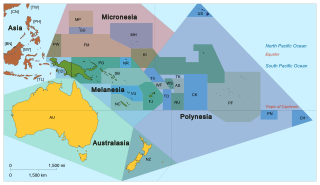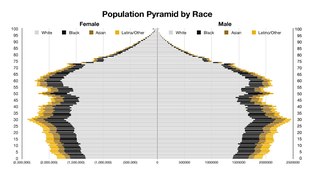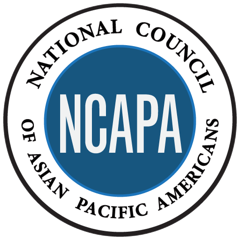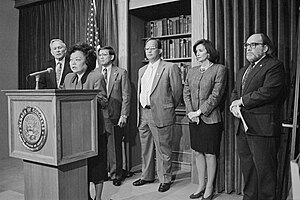
Honolulu is the capital and largest city of the U.S. state of Hawai‘i, which is located in the Pacific Ocean. It is an unincorporated county seat of the consolidated City and County of Honolulu, situated along the southeast coast of the island of Oʻahu, and is the westernmost and southernmost major U.S. city. Honolulu is Hawaii's main gateway to the world. It is also a major hub for business, finance, hospitality, and military defense in both the state and Oceania. The city is characterized by a mix of various Asian, Western, and Pacific cultures, as reflected in its diverse demography, cuisine, and traditions.

Tehama County is a county located in the northern part of the U.S. state of California. As of the 2020 census, the population was 65,829. The county seat and largest city is Red Bluff.

Asian Americans are Americans of Asian ancestry. Although this term had historically been used for all the indigenous peoples of the continent of Asia, the usage of the term "Asian" by the United States Census Bureau excludes people with ethnic origins in certain parts of Asia, including West Asia who are now categorized as Middle Eastern Americans; and those from Afghanistan who may identify as being either Central Asian Americans, Middle Eastern Americans or South Asian American. The "Asian" census category includes people who indicate their race(s) on the census as "Asian" or reported entries such as "Chinese, Indian, Filipino, Vietnamese, Indonesian, Korean, Japanese, Pakistani, Malaysian, and Other Asian". In 2020, Americans who identified as Asian alone (19,886,049) or in combination with other races (4,114,949) made up 7.2% of the U.S. population.

Pacific Islanders, Pasifika, Pasefika, or rarely Pacificers are the peoples of the Pacific Islands. As an ethnic/racial term, it is used to describe the original peoples—inhabitants and diasporas—of any of the three major subregions of Oceania.
Race and ethnicity in the United States census, defined by the federal Office of Management and Budget (OMB) and the United States Census Bureau, are the self-identified categories of race or races and ethnicity chosen by residents, with which they most closely identify, and indicate whether they are of Hispanic or Latino origin.
Hapa is a Hawaiian word for someone of mixed ethnic ancestry. In Hawaii, the word refers to any person of mixed ethnic heritage, regardless of the specific mixture. In California, the term is used for any person of white and East Asian or Southeast Asian admixture. Both uses are concurrent, but the latter usage is controversial.

The United States of America has a racially and ethnically diverse population. At the federal level, race and ethnicity have been categorized separately. The most recent United States Census officially recognized five racial categories as well as people of two or more races. The Census Bureau also classified respondents as "Hispanic or Latino" or "Not Hispanic or Latino", identifying Hispanic and Latino as an ethnicity, which comprises the largest minority group in the nation. The Census also asked an "Ancestry Question," which covers the broader notion of ethnicity, in the 2000 Census long form and the 2010 American Community Survey; the question worded differently on "origins" will return in the 2020 Census.

OCA-Asian Pacific American Advocates is a non-profit organization founded in 1973, whose stated mission is to advance the social, political, and economic well-being of Asian Americans and Pacific Islanders (AAPIs) in the United States.
Pacific Islander Americans are Americans who are of Pacific Islander ancestry. For its purposes, the United States Census also counts Indigenous Australians as part of this group.

The demographics of Asian Americans describe a heterogeneous group of people in the United States who trace their ancestry to one or more Asian countries.

The National Council of Asian Pacific Americans (NCAPA) is a coalition of 35 national Asian-Pacific American organizations in the United States. Founded in 1996 and based in Washington D.C., NCAPA seeks to expand the influence of Asian-Pacific Americans in the legislative and legal arenas, and enhance the public's and mass media's awareness and sensitivity to Asian-Pacific American concerns.
Florida is the third-most populous state in the United States. Its residents include people from a wide variety of ethnic, racial, national and religious backgrounds. The state has attracted immigrants, particularly from Latin America. Florida's majority ethnic group are European Americans, with approximately 65% of the population identifying as White. National ethnic communities in the state include Cubans, who migrated en masse following the revolution in mid-century. They have been joined by other immigrants from Latin America, and Spanish is spoken by more than 20% of the state's population, with high usage especially in the Miami-Dade County area.
Asian people are the people of Asia. The term may also refer to their descendants.

Americans are the citizens and nationals of the United States of America. Although direct citizens and nationals make up the majority of Americans, many dual citizens, expatriates, and permanent residents could also legally claim American nationality. The United States is home to people of many racial and ethnic origins; consequently, American culture and law do not equate nationality with race or ethnicity, but with citizenship and an oath of permanent allegiance.
Multiracial Americans are Americans who have mixed ancestry of two or more races. The term may also include Americans of mixed race ancestry who self-identify with just one group culturally and socially. In the 2010 United States census, approximately 9 million individuals or 3.2% of the population, self-identified as multiracial. There is evidence that an accounting by genetic ancestry would produce a higher number. Historical reasons are said to have created a racial caste such as the European-American suppression of Native Americans, often led people to identify or be classified by only one ethnicity, generally that of the culture in which they were raised. Prior to the mid-20th century, many people hid their multiracial heritage because of racial discrimination against minorities. While many Americans may be considered multiracial, they often do not know it or do not identify so culturally, any more than they maintain all the differing traditions of a variety of national ancestries.

The White House Initiative on Asian Americans, Native Hawaiians, and Pacific Islanders (WHIAANHPI) is a United States governmental office that coordinates an ambitious whole-of-government approach to advance equity, justice, and opportunity for Asian Americans, Native Hawaiians, and Pacific Islanders. The Initiative collaborates with the Deputy Assistant to the President and AA and NHPI Senior Liaison, White House Office of Public Engagement and designated federal departments and agencies to advance equity, justice, and opportunity for AA and NHPIs in the areas of economic development, education, health and human services, housing, environment, arts, agriculture, labor and employment, transportation, justice, veterans affairs, and community development.
The National Queer Asian Pacific Islander Alliance (NQAPIA) is an American federation of Asian American, South Asian, Southeast Asian. and Pacific Islander LGBTQ organizations. NQAPIA was formed in 2007, as an outgrowth of the LGBT APA Roundtable working groups at the 2005 National Gay Lesbian Task Force Creating Change Conference in Oakland, California. NQAPIA seeks to build the capacity of local LGBT AAPI organizations, invigorate grassroots organizing, develop leadership, and challenge homophobia, racism, and anti-immigrant bias. The organization "focuses on grass-roots organizing and leadership development."
The demographics of Los Angeles County include a diverse people by race, ethnicity, and nationality. The 2010 United States Census reported that Los Angeles County had a population of 9,818,605. The racial makeup of Los Angeles County was 4,936,599 (50.3%) White, 856,874 (8.7%) African American, 72,828 (0.7%) Native American, 1,346,865 (13.7%) Asian, 26,094 (0.3%) Pacific Islander, 2,140,632 (21.8%) from other races, and 438,713 (4.5%) from two or more races.
Asian American activism broadly refers to the political movements and social justice activities involving Asian Americans. The general definition of activism is defined as "the activity of working to achieve political or social change, especially as a member of an organization with particular aims." The history of Asian American activism is important because according to Linh Dich, "Asians and Asian Americans.. . are often left out of political narratives, such as the Civil Rights movement, which prevents Asian and Asian Americans from being seen as a generative force for political rhetoric and change."











